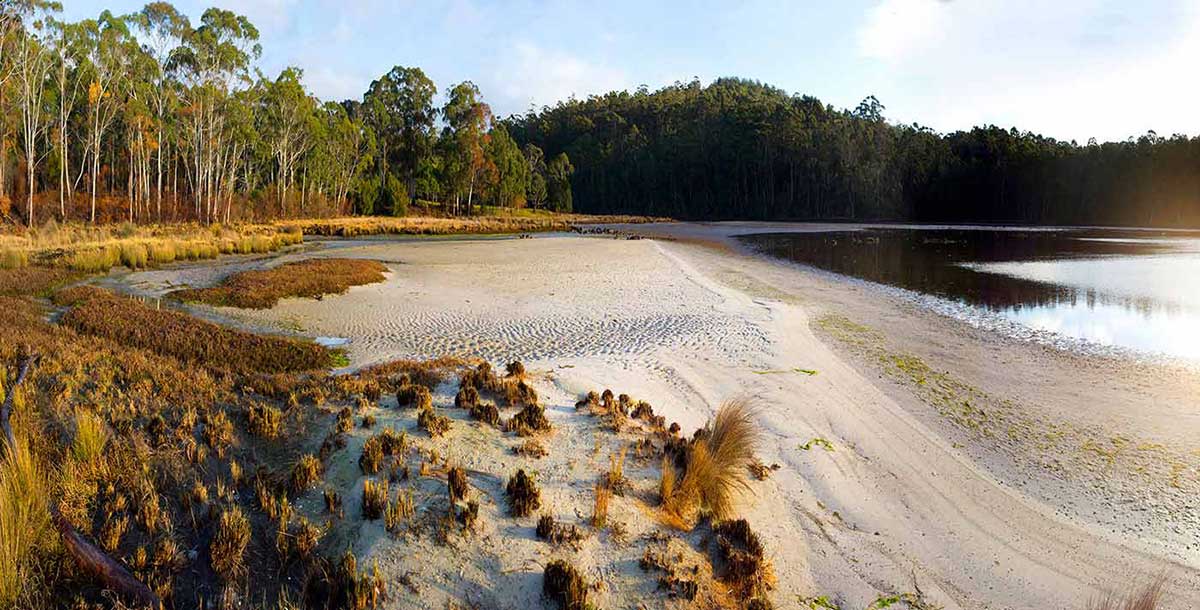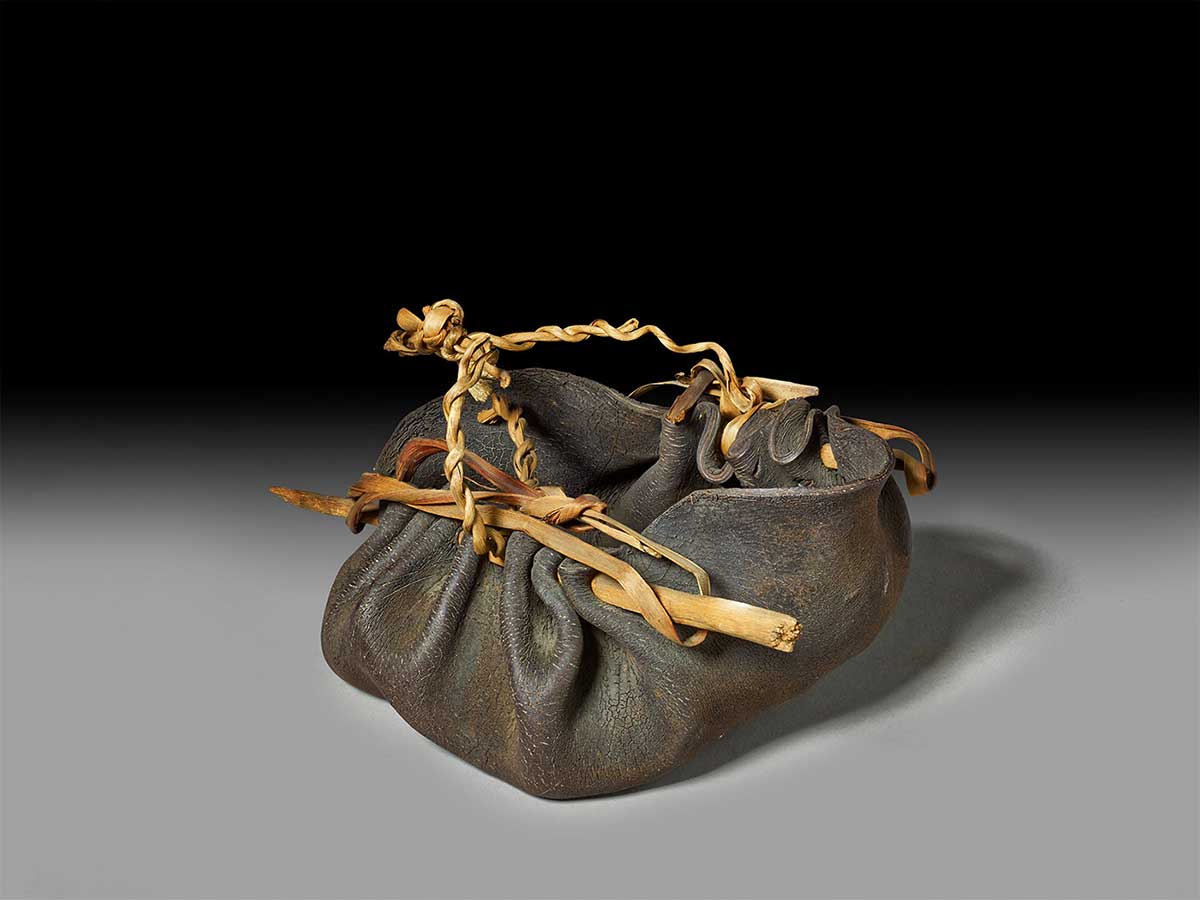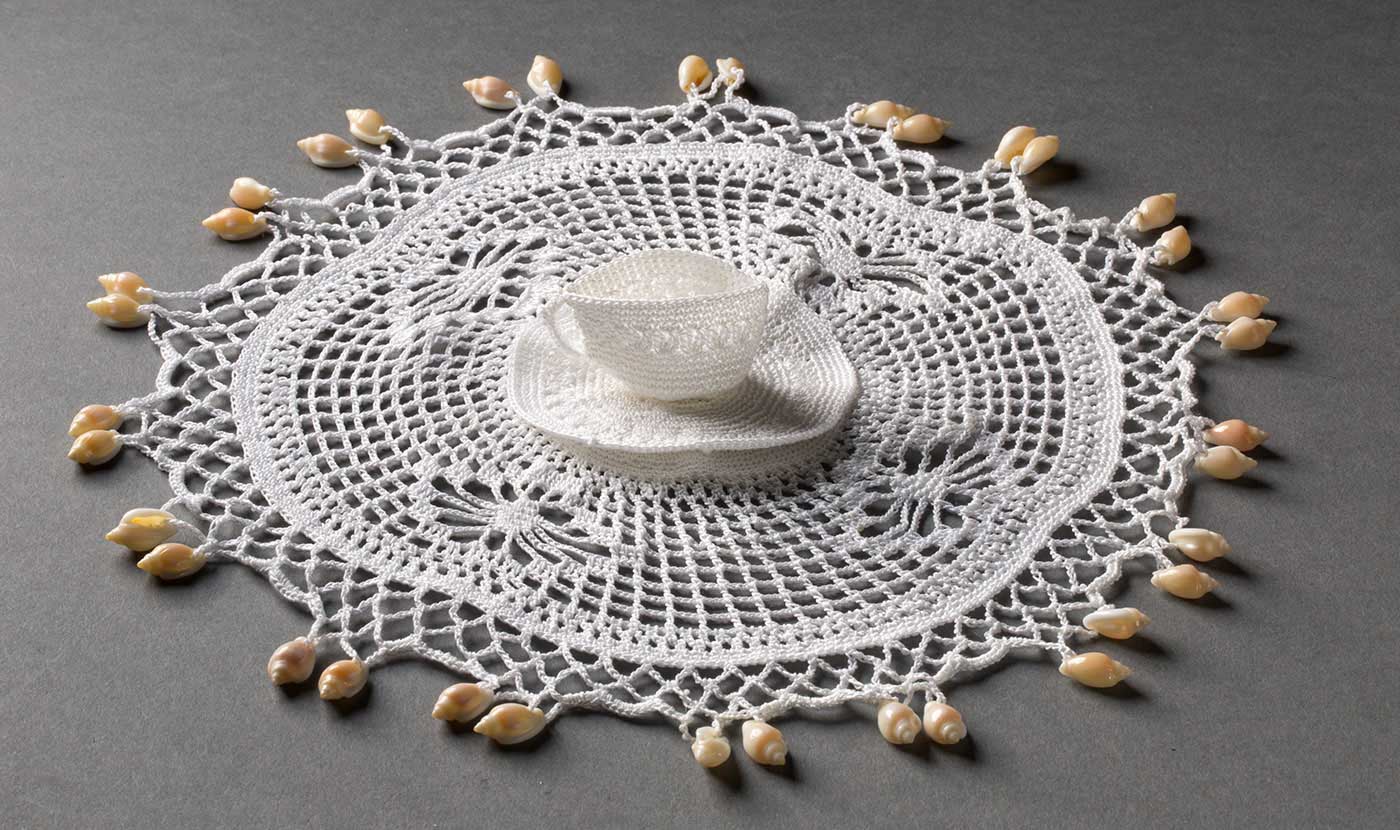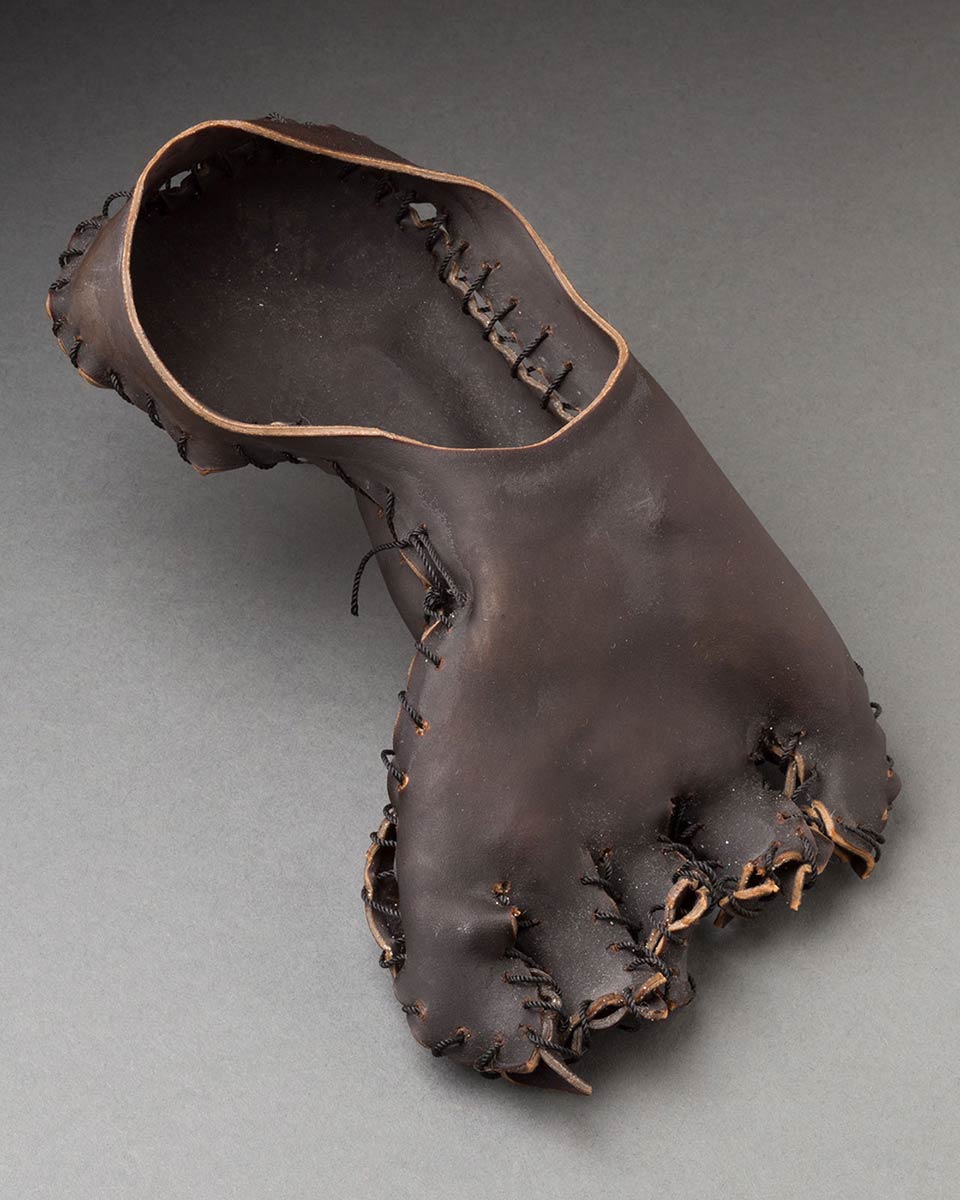Keeping culture
pooralee-amee-amatta (Jim Everett), paymarena elder, 2014:
You’ve got to convince others, especially in your own state Tasmania, that we’re still here ... I think the biggest impact we had was when we took Oyster Cove back. We re-occupied Oyster Cove on 16 January 1984.
When visitors to the 1851 Great Exhibition in London viewed the kelp water carrier (below) and a shell necklace, what would they have imagined of the makers’ lives?
Although their names are not recorded, the creators of these objects were most likely living at Oyster Cove, survivors of the campaign to remove Aboriginal people from the Tasmanian mainland. Despite terrible losses of country and family, they performed ceremony, hunted and continued making artefacts. Some of these they sold to colonists.
The Tasmanian Aboriginal community reclaimed Oyster Cove as putalina in 1984, more than 100 years after it was abandoned. In 1995 the Tasmanian Government officially handed back the land to the community. Each year the putalina festival celebrates the vitality of Aboriginal culture and community.
Old objects
Joseph Milligan, the collector of this water carrier and the shell necklace, was Secretary of the Royal Society of Tasmania from 1848 until 1860. In this role he coordinated the Tasmanian display at the 1851 Great Exhibition in London. To represent Tasmanian Aborigines, Milligan sent shell necklaces, baskets and a model canoe.
He probably obtained these objects from the Aborigines living at Oyster Cove, only three years after they had been moved there from Flinders Island, under his supervision. After the 1851 exhibition closed, Milligan gave the Tasmanian Aboriginal objects to the British Museum.
Auntie Patsy Cameron, Tasmanian Aboriginal elder, 2014:
To see those [things] that were made by people during colonial times raises our spirit and warms our being about who we are as Tasmanian Aborigines today.
New objects
Crocheted milk jug cover, 2003
Leonie Dickson, Tasmanian Aboriginal elder, 2014:
Some of the ladies who do it, they're in their eighties. And they're amazing. When you get a group of Aboriginal women together, all yarnin' and laughin', it's really an amazing feeling.
Kelp foot, 2002
Tessa Atto, Tasmanian Aborigine, 2014:
I think a main point would be not to focus so much on the invasion and colonisation ... [but] to look back at what we had beforehand, which we still have today, like the making [of] shell necklaces, and the bracelets, making baskets, working with ricau, which is the bull kelp. I think those things happened forever and are still happening today. This continual culture.
Theresa Sainty, pakana (Tasmanian Aborigine), 2014:
I think ... our people had those objects in their hands ... I think [about] what conversations that were around that basket ... I just imagine holding one of those baskets.
You may also like



